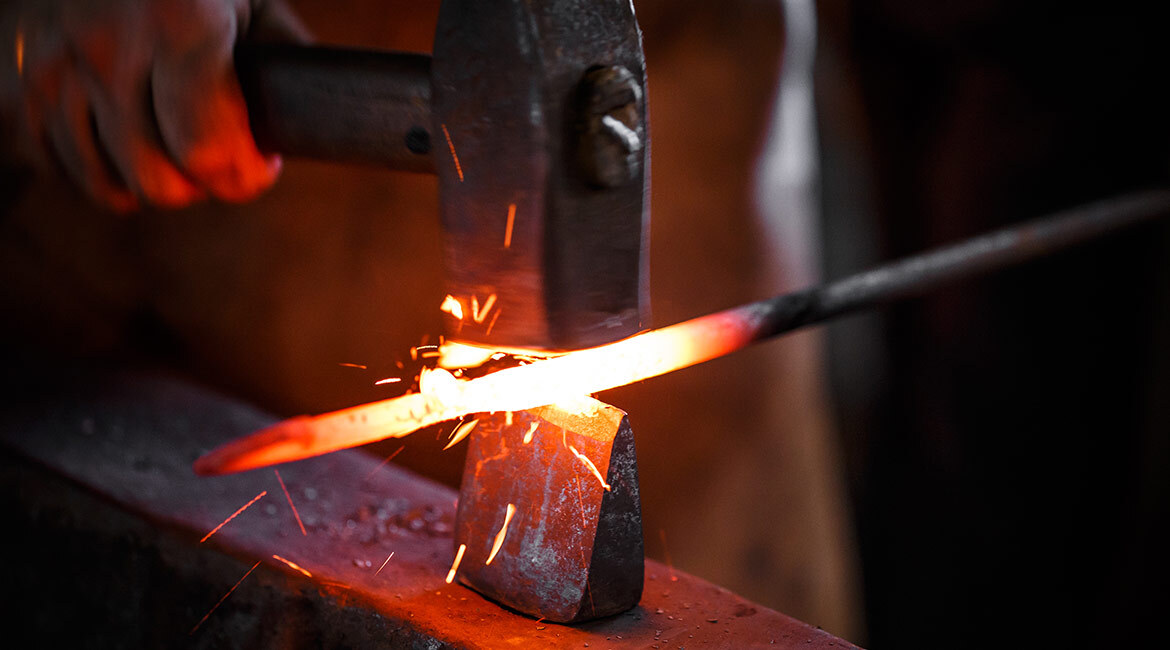Atomistic Approach in Steel Transformation

The featured image was bought from Istock,com and is protected by copyright.
The dynamic transformation (DT) of austenite to a ferrite phase at high temperatures was studied in a medium-carbon low-alloy steel. The study involved hot compression tests followed by microstructural examinations using electron microscopy. Mathematical calculation of the data indicated that Cr atoms increase the driving force for the transformation of austenite to ferrite. However, when the influences of stress and thermodynamic analysis were considered, it was observed that Cr increased the barrier energy and therefore, emerged as a barrier to the transformation. An in-depth atomic analysis, based on lattice and pipe diffusion theories quantifies the role of stress on the diffusivity of Cr and is compared with other main alloying elements, such as C, Si, and Mn, and its impact, positive or negative, on the DT barrier energy. Finally, a comparison was made regarding the differential effects of temperature and stress on the initiation of DT in medium-carbon low-alloy steels.
Introduction
Large components, such as landing gear or wind turbine blades and shafts, are usually made with high strength steel through a shaping process known as casting, followed by secondary shaping processes like rolling, forging, and extrusion to give a final shape to the finished part. These processes usually occur at high temperatures (as high as 1100̊ C for steel) but still well below melting temperatures. At these temperatures, various mechanisms take place that completely transform the microstructure and result in changes in the mechanical properties of the final product.
Steel at different temperatures has different phases, such as austenite (high temperature), ferrite/bainite (intermediate temperature) and martensite (low temperature). Transformation of austenite to ferrite at high temperature under deformation is termed dynamic transformation, which has been reported to affect mechanical properties during industrial processes [1]. This transformation is significantly affected by many parameters including the quantity of alloying elements in steels. Investigation at the atomistic level of alloying element variations and their influence on dynamic transformation is the leading objective of the present research.
Magnifying to the Atomic Level
Deformation processes like compression or tensile testing involve movement of alloying element atoms, which significantly affects the mechanical behavior of a material. These atomistic movements occur by diffusion process and are largely influenced by deformation parameters like rate of deformation, temperature, stress, etc. Diffusional processes occur by lattice or pipe diffusion. Lattice diffusion occurs when substitutional or interstitial atoms move to another lattice position, e.g. Fe atoms in Fe alloys, whereas pipe diffusion occurs when the atoms move via edge dislocations, e.g. interstitial atoms like carbon (C) in Fe alloys [2]. It is known that the interstitial atoms and solutes diffuse much faster through pipe diffusion than lattice diffusion due to higher activation energies required for the latter [3]. The dynamic transformation process was initially reported to be a diffusion-less transformation because lattice diffusion was considered to be the dominating factor. Therefore, investigation considering pipe diffusion could bring a better understanding of dynamic transformation mechanisms.
Fig. 1 EBSD grain boundary map of medium carbon low alloy steel deformed at a temperature of 1200 °C at a strain rate of 0.25 s-1[4Microstructure Study on Low Carbon Steel
To study this, medium low carbon steel was considered and hot deformed using the Gleeble® Thermomechanical Simulator and analyzed using the SU8230 Scanning Electron Microscope, and Electron Back-Scatter Diffraction (EBSD) techniques. Data obtained from various deformation parameters were considered for diffusional study (pipe diffusion) and compared with the obtained microstructures (Fig. 1). The microstructure study revealed that with the increase in strain rate and decrease in temperature, dynamically transformed ferrite fraction decreased. The ferrite grain size was found to decrease with increasing strain rate. Using pipe diffusion equations [4], it was found that the diffusivity of interstitial atoms (C), as well as substitutional atoms (Si, Mn and Cr) increased with the strain rate, but the diffusion distance of interstitial atoms increased and that of substitutional atoms significantly decreased. A very good correlation was obtained between the grain size of dynamically transformed ferrite and pipe diffusion results, which was used to develop a novel method of transformation in steels using the atomistic approach.
During hot deformation at temperatures of 1200 °C and 1150 °C, the austenite matrix (Fig. 2a), composed of interstitial (C) and substitutional (Si, Cr and Mn) alloying elements, is deformed through the action of stress. As the stress increases, atoms of alloying elements like C (interstitial atom) and Si (substitutional atoms) start to diffuse from the austenite matrix, thus making the transformation easier (Fig. 2b). However, elements like Cr and Mn (substitutional atoms), which have relatively lower diffusivity, remain in the austenite matrix, and thus make the austenite matrix stronger. After shear accommodation and dilatation, the austenite matrix is converted into Widmanstätten ferrite (Fig. 2d) [1]. The nucleation of Widmanstätten ferrite starts from the prior austenite grain boundary (PAGB) (Fig. 2e). Due to the effects of stress, strain rate and corresponding diffusion of carbon, the Widmanstätten ferrite starts to grow [4]. At slow strain rates, the diffusion distance of C is less, as compared to the grain size, which results in the formation of quasi-polygonal ferrite (QPF) (Fig. 2f). However, at high strain rates, the diffusion distance of carbon is higher and results in the formation of Widmanstätten ferrite with long plates (Fig. 2g).
Fig. 2 Schematic diagram of the dynamic transformation phenomenon [5]Additional Information
For more information on this research, please read the following research paper: Chadha, K; Ahmed, Z.; Aranas, C.Jr.; Shahriari, D.; Jahazi, M. 2018. “Influence of stain rate on dynamic transformation of austenite in as as-cast medium-carbon low-alloy steel”. Materialia, 1: p. 155-167.



